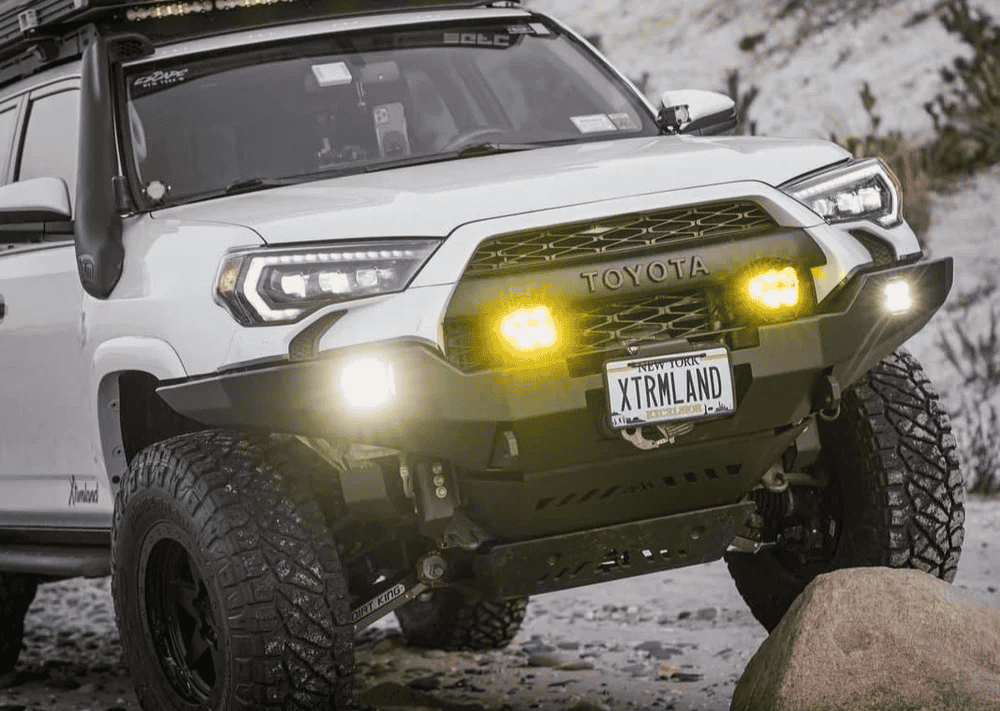Overland Vehicles

Snow changes everything. Powder hides ruts, crust grabs sidewalls, and refreeze turns familiar tracks into glass. A smart snow trail overland build starts with predictable control, not just brute traction. Prioritize balanced weight, slow steering inputs, and gear that still works when fingers are numb. Think about how your rig starts in a deep freeze, how you melt ice for water, and how you recover safely when a drift swallows the road.
Driving technique matters as much as hardware. Keep momentum smooth, brake early, and use engine braking on descents to avoid locked wheels that slide. In deep snow, carry speed through rolling terrain to avoid high centering. Stop on level ground when possible so you can roll out if an overnight refreeze turns the surface to ice.
Winter travel magnifies weak links. A capable snow trail overland build addresses traction, recovery, heat, power, and visibility before creature comforts.
Choose winter rated all terrain tires with the three peak mountain snowflake symbol for compound grip in cold temperatures. Narrower sizes can cut through slush to reach firmer layers, while aired down pressures widen the contact patch in fresh snow. Pack chains sized to your tires and test fit at home, including tensioners and wheel clearance checks. Lockers help when a wheel unloads on a drift edge, but use a gentle throttle to avoid breaking loose and skating. Keep differentials, transmission, and transfer case serviced with lubricants rated for low temperatures to maintain engagement and shift quality.
Batteries lose capacity in the cold, so size your system with margin and plan for reduced solar harvest during short days and low sun angles. Lithium packs need low temperature charging protection or heating, and a reliable alternator charge path keeps the bank topped while driving. A dedicated air heater provides dry heat that reduces condensation inside the cabin, and insulated window covers plus a thermal break under flooring hold warmth. Store water inside the living space to prevent freeze, and carry a way to heat it for cooking and hydration.
Rated recovery points front and rear are non negotiable. Pair a properly specd winch with synthetic line, soft shackles, and a tree saver. A shovel and traction boards shine when you need to clear a drift lip or build a gentle ramp out of a hole. Kinetic ropes have their place for controlled pulls in snow, yet require training and distance. Keep a winter focused tool roll, spare belts, fluids, and a tire repair kit accessible without unpacking the whole rig. Lights matter more in winter; add aimed fog lights low on the bumper to cut under snow glare, and reserve roof lighting for slow site work, not road travel.
Plan around early sunsets and cold starts. Check multi day forecasts and avalanche reports where relevant, and monitor wind patterns that build cornices across passes. Map fuel range with idle time for warmups, unexpected detours, and recovery sessions. Travel with another vehicle when possible and set check in windows using GMRS or a satellite communicator. Pack layers that breathe while moving but insulate at camp, plus gloves dedicated to recovery so your warm pair stays dry. For food, prioritize high calorie meals that rehydrate quickly and deliver heat along with nutrition.
Road surfaces can flip from powder to ice within a few hundred yards. Test grip in a safe area before committing to a descent. If you cannot control speed with engine braking alone, chains are your next move. In strong cold, plastics stiffen and seals shrink, so open doors and hatches carefully. At camp, clear snow from under the rig to reduce ice bonding overnight, and park facing out to track conditions as you depart.
If your winter checklist feels long, that is because the season is unforgiving. A purpose built rig takes the stress out of cold weather trips, from heater ducting and insulated storage to recovery layouts you can deploy with gloves. For a look at how a complete cold season platform comes together, explore overland rigs that balance traction, power, and comfort without excess weight. When you are ready to tailor driveline, electrical, and interior details to your routes, see the custom overland upfit approach that turns priorities into reliable hardware. Curious about process, timelines, and why travelers trust our shop in Fayetteville Arkansas through winter and beyond? Read why choose OZK Customs and start planning your season.
Share your route goals and the coldest nights you expect, and we will map a winter focused system that starts clean, heats fast, and stays organized when the trail goes white.
Ready to build a winter capable rig that starts every morning, grips when the trail turns icy, and keeps you warm through subzero nights? Share your goals, terrain, and timeline in the form and our team will design a snow tested overland setup tailored to you. Secure your build slot today.
ADDRESS:
6159 E Huntsville Rd, Fayetteville, AR 72701
PHONE:
(479) 326-9200
EMAIL:
info@ozkvans.com